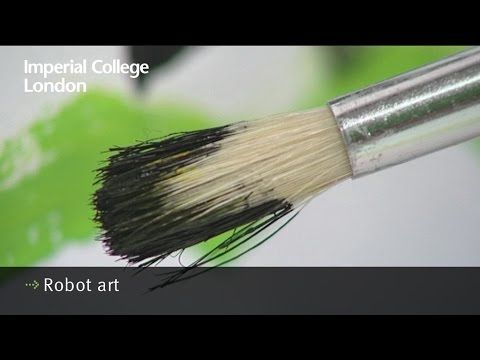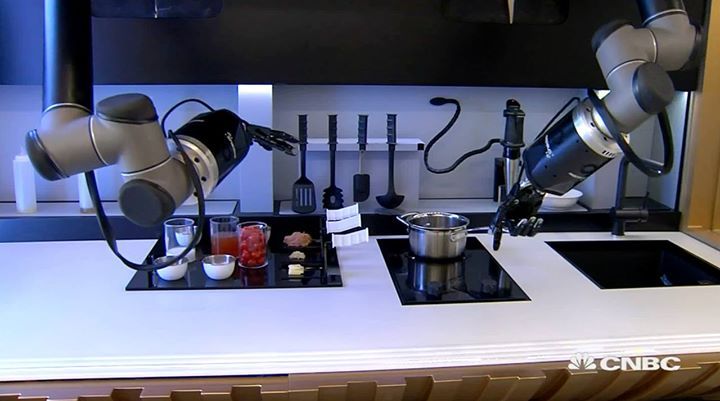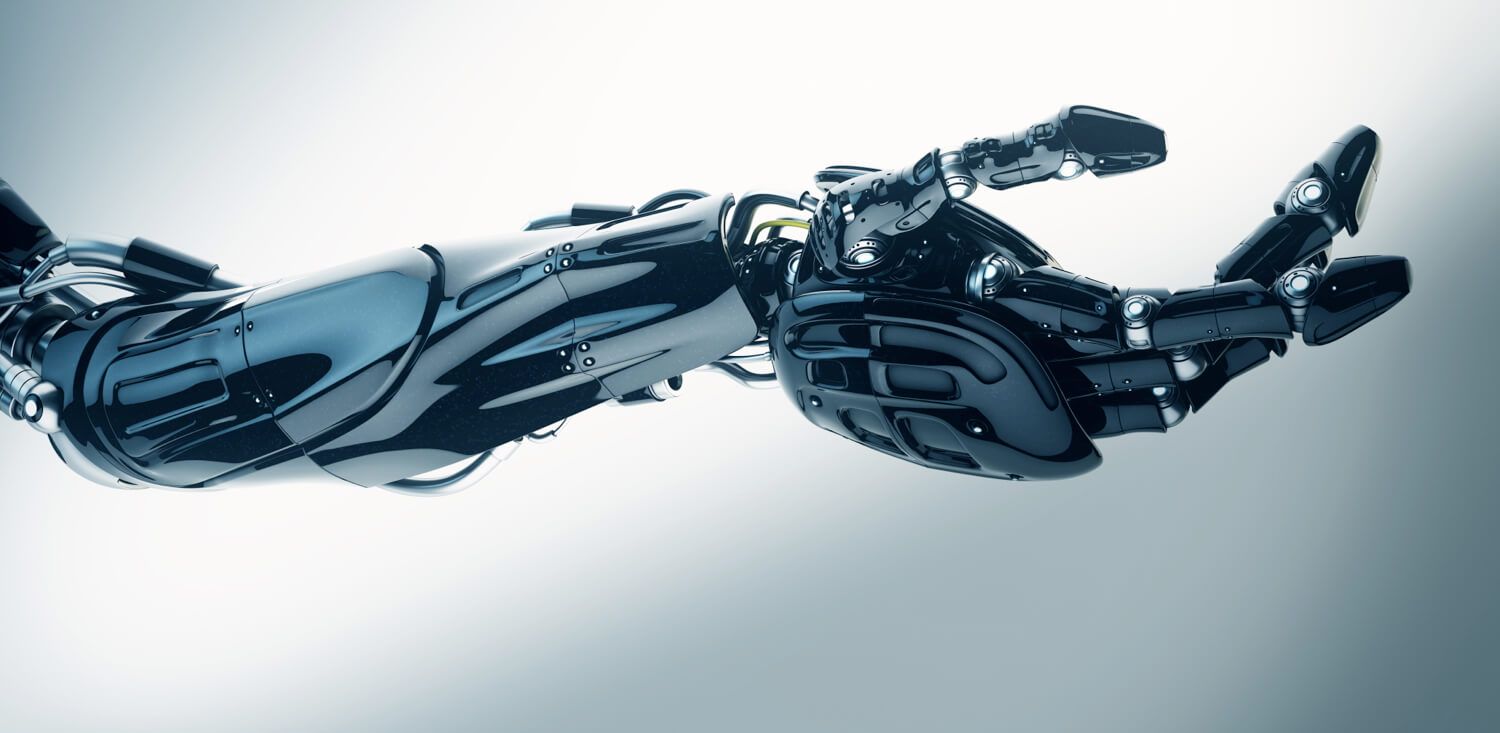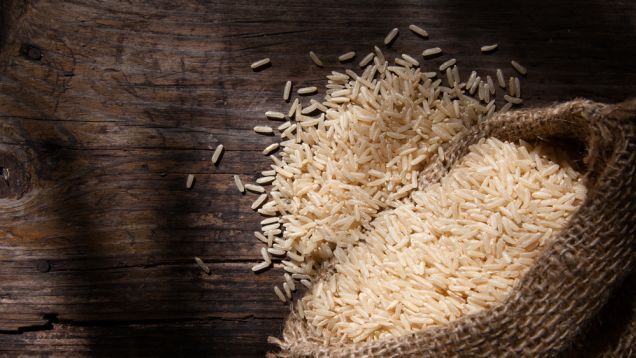Archive for the ‘food’ category: Page 314
Sep 27, 2015
This robotic arm lets people paint with their eyes
Posted by Shailesh Prasad in categories: food, mobile phones, robotics/AI

Sabine Dziemian, a postgraduate in Faisal’s research group, says, “If I want to draw a straight line, I look at the start point and the end point, and the robot moves the brush across that line.”
Blinking three times puts the robot in color selection mode, in which it moves the brush over to a variety of pre-dispensed colors. At that point, the user only needs to look at the color he or she wants to use next, and the arm applies the color to the brush.
Continue reading “This robotic arm lets people paint with their eyes” »
Sep 26, 2015
How Robots and Sensors Will Transform Transportation, Agriculture, and Elder Care
Posted by Shailesh Prasad in categories: electronics, food, health, robotics/AI, transportation
Sensors and robotics are two exponential technologies that will disrupt a multitude of billion-dollar industries.
This post (part 3 of 4) is a quick look at how three industries — transportation, agriculture, and healthcare/elder care — will change this decade.
Before I dive into each of these industries, it’s important I mention that it’s the explosion of sensors that is fundamentally enabling much of what I describe below.
Sep 22, 2015
Humanity makes first ever withdrawal from the doomsday seed vault
Posted by Bryan Gatton in categories: existential risks, food
When humanity needs to make use of a facility known lovingly as the “doomsday seed vault,” you know things have gone off the rails. After four years of civil war in Syria, the region’s main source of important seeds in the region has been damaged, and researchers from the International Centre for Agricultural Research in Dry Areas (ICARDA) is asking to make a withdrawal from the seed bank. This will be the first time humanity has had to draw on this resource.
The Svalbard Global Seed Vault was officially opened in 2008 and contains more than 860,000 samples of seeds from nearly every country on Earth. Its goal is to preserve important agricultural crops like beans, wheat, and rice so they will be available in the event of war or natural disaster.
To do this, the vault is built into the side of a mountain in the remote northern reaches of Norway on the Svalbard archipelago. It’s only 800 miles (1300 km) from the north pole, which allows researchers to keep the seeds at a frosty 0 degrees fahrenheit. Even if all the people left Svalbard and the power went offline, the vault would remain frozen and intact for at least a few centuries.
Sep 21, 2015
This tree produces 40 different types of fruit (Science Alert)
Posted by Shailesh Prasad in categories: food, sustainability
An art professor from Syracuse University in the US, Van Aken grew up on a family farm before pursuing a career as an artist, and has combined his knowledge of the two to develop his incredible Tree of 40 Fruit.
In 2008, Van Aken learned that an orchard at the New York State Agricultural Experiment Station was about to be shut down due to a lack of funding. This single orchard grew a great number of heirloom, antique, and native varieties of stone fruit, and some of these were 150 to 200 years old. To lose this orchard would render many of these rare and old varieties of fruit extinct, so to preserve them, Van Aken bought the orchard, and spent the following years figuring out how to graft parts of the trees onto a single fruit tree.
Working with a pool of over 250 varieties of stone fruit, Van Aken developed a timeline of when each of them blossom in relationship to each other and started grafting a few onto a working tree’s root structure. Once the working tree was about two years old, Van Aken used a technique called chip grafting to add more varieties on as separate branches. This technique involves taking a sliver off a fruit tree that includes the bud, and inserting that into an incision in the working tree. It’s then taped into place, and left to sit and heal over winter. If all goes well, the branch will be pruned back to encourage it to grow as a normal branch on the working tree.
Sep 19, 2015
This Is How Much Food It Would Take to End World Hunger
Posted by Sean Brazell in categories: food, security
There are over 500 million hungry people in the world—but that number only tells part of the story. The other part of it is the amount of the actual food shortfall. So how much food would we need to make up the gap? There’s now an exact number.
The latest International Food Security report is out, and the good news is that global food insecurity has been falling—and it’s projected to keep on doing that over the next 10 years. The bad news? It’s not falling everywhere. Sub-Saharan Africa is especially being shut out of these gains.
But how much food would it take to close the gap for every food insecure person on the planet to have access to 2,100 calories a day? The USDA has calculated a figure: 11.8 million tons of grain.
Sep 15, 2015
Can A Healthy Gut Help You Live Longer?
Posted by Roy in categories: biotech/medical, food, health, life extension
Our gut and the microbiome play a crucial role in our health, but could better understanding of that role help us avoid disease and live longer?
The microbiome weighs 2–3 pounds and contains 10 times more cells than our own, but we’ve neglected our microbial tenants for a long time. These little denizens help us break down food, provide key nutrients and even play a role in inflammation and the integrity of our intestinal tract. It’s no surprise then that fermented foods and probiotics are gaining popularity as we become more aware of how important our gut is. Recent evidence even links poor digestive health to chronic inflammation and Parkinson’s disease.
New research suggests that both gut integrity, and the amount and type of bacteria that reside within it, can actually predict an individual’s health. They may even quicken or slow the pace of aging.
Sep 11, 2015
Skyscraper Farms, Lab-grown Meat & Soylent — Meeting the needs of the 21st Century
Posted by Michael Paton in categories: biotech/medical, energy, existential risks, food, sustainability
Meeting the basic needs of humanity is increasingly brought into question as we begin to resemble a cancer to the living organism we inhabit. As mass extinction continues to become an omnipotent reality, it’s apparent that more humans equals more problems. To fix this, we have to approach them in the same way farmers do: with resiliency. Farmers try to nurture their crops and hope for the right season. Although, even the predictability of spring, summer and fall’s outcome can be misleading. Nature has a way of leading things in the exact opposite direction than they seem to be headed. And it is those who’ve treaded, but still embark that truly encounter the rewards. For if farmers were to give up after an adverse season, there’d be no food next year. There’d be no continuity of supply for society. There’d be no method of feeding the hungry. No solution to ease the growing population and its rising demands.
So, with exponential gain in human births this century, how do we combat such problems? One possible solution is to build “green skyscrapers” for the sole purpose of farming, where we are able to control the environment and have multiple levels of plant growth. This could be done by utilizing an array of mirrors to redirect sunlight to every floor, while supplementing with multi-spectral, energy-efficient LED’s. With advanced humidity control and water-recycling techniques, we’d contribute towards the global conservation of water and open up valuable land to reforestation — all through subjugating the unpredictability of nature. This ensures the utmost quality and care goes into producing local, high-quality food, with the added benefit of honing the technology needed for interplanetary colonization.
Sep 11, 2015
The 5 common traits of negligibly senescent species
Posted by Valentina Lencautan in categories: biotech/medical, food, life extension, neuroscience
The biology of aging is traditionally studied in fast-living organisms such as mice, worms and fruit flies. Short-lived species certainly have a role to play in this field, but they are only the tip of the iceberg.
Within the natural ecosystem, organisms display a range of aging processes, most often accelerated aging, or gradual aging (in the case of humans), but also, a range of species with slow or even negligible aging, which is known as negligible senescence. Unlike humans, such species have a constant mortality rate for the duration of their lifespan, as well as a constant or even increasing fertility rate. The number of negligibly senescent species which we are currently aware of is likely to grow as more and more are studied and discovered, both in the wild and in the lab.
By studying the processes which give these creatures longer lifespans, there is the possibility that they could be recreated in humans in order to extend our own. How negligible senescence is achieved by each individual species varies, but here are five of the most common traits.
Sep 9, 2015
Can Calorie Restriction Actually Reduce Lifespan? Take A Look At This
Posted by Roy in categories: food, life extension
Calorie restriction (CR) is big news in the anti-aging world, but how effective is it really? The evidence might be more mixed than you think.
















